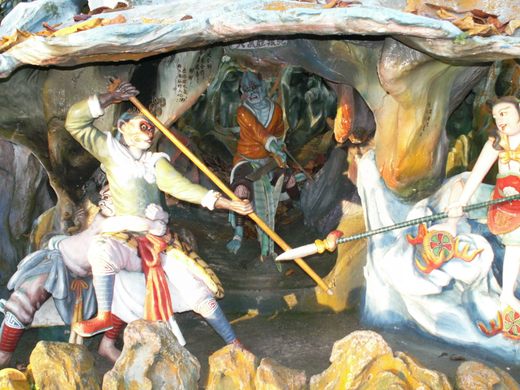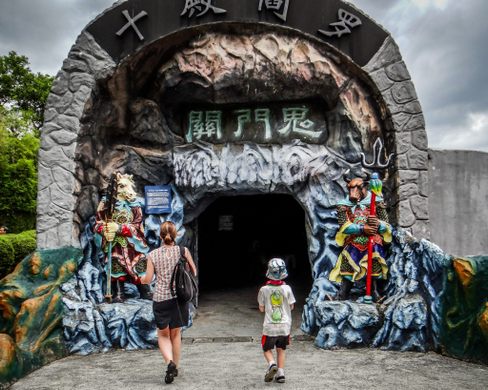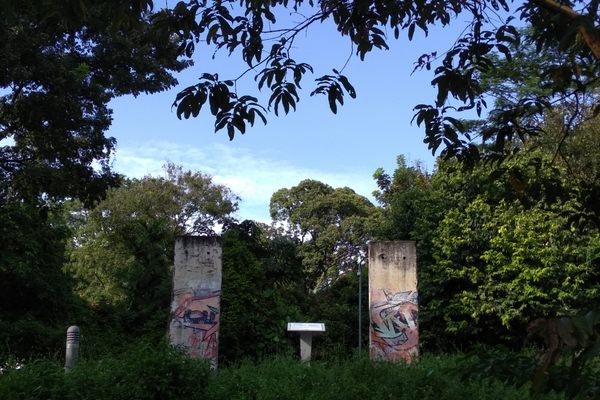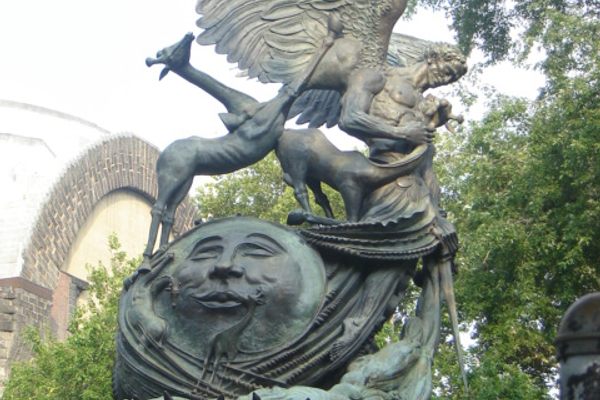Mentioning Haw Par Villa to Chinese Singaporeans may raise an eyebrow or two, and will likely lead to a conversation about how they were forced to go there as children in order to learn about good morals, the consequences of their actions, and to see the horrors they may face in the afterlife, should they stray.
Casually referred to as a “Buddhist amusement park”, Haw Par Villa is actually a very graphic and educational journey through the hodgepodge of Buddhism, Taoism and Confucianism that constitute the traditional fabric of Chinese life, legend, spirituality and morality – along with a smattering of references to Singaporean history and their relationship to the world around them – spelled out in greater than life-size plaster dioramas.
The villa was created in 1937 as “Tiger Balm Gardens” by Aw Boon Haw and Aw Boon Par, the makers of the medicinal ointment known as Tiger Balm, as a way to give back to the community and to pass on the beliefs and values of Chinese culture to the uninitiated. After many years of additions – many were dubious and short lived – and changes (some statues were moved to the Chinese Garden in western Singapore), the sprawling grounds still feature hundreds of huge dioramas (some of which are large enough to walk into), and over a thousand wonderfully rendered statues.
As you walk through the park you will come across a beautiful koi and turtle pond that is a great spot to take a break, feed the fish and relax amongst the bridges, pagodas and, incongruously, the Statue of Liberty.
You can easily spend an entire afternoon losing yourself in this plaster maze of mythology posing with the Monkey King and Sumo wrestlers, or the very, very bloody battle between rabbits and rats, but be mindful to save some time for the highlight of your trip: Buddhist Hell.
Loosely based on Buddhist notions of Hell, the Ten Courts of Hell Cave uniquely illustrates the cultural synthesis of Buddhist and other mythologies that is ubiquitous in Chinese culture. viewable in all of its surrealistic beauty and spooky lighting. You will be treated to a very graphic, up close and personal account of what you have to look forward to as a result of your transgressions in this life. Not to give any of it away, but who knew being reincarnated was so involved, or so brutal?
A walk back to feed the turtles may be in order after this, or maybe a visit to the gift shop. Tiger Balm soothes all aches…
Know Before You Go
Taxi: A quick ride from downtown, but it's also a straight shot from HarbourFront MRT (NE1), which makes it an easy side trip if you plan on visiting VivoCity or Sentosa. Train: A MRT stop on the Circle Line named Haw Par Villa (CC25) takes you to the front gate. Bus: Take SBS Transit bus 200 from Buona Vista MRT Station (EW21), SBS Transit bus 10, 30, SMRT Bus 188 from HarbourFront Centre, SBS Transit bus 143 from Orchard Road, SBS Transit bus 51 from Chinatown, or SBS Transit bus 175 from Clementi MRT Stn/Temporary Bus Interchange.
Tickets: Note that while there is no cost to check out Haw Par Villa, there is an admission fee to see the Ten Courts of Hell, which is part of Hell's Museum. It's 18 SGD for adults and 10 SGD for children (free for those aged 6 and under). If you want to pay using a credit/debit card, you can purchase your tickets in advance via their website.




























































Follow us on Twitter to get the latest on the world's hidden wonders.
Like us on Facebook to get the latest on the world's hidden wonders.
Follow us on Twitter Like us on Facebook